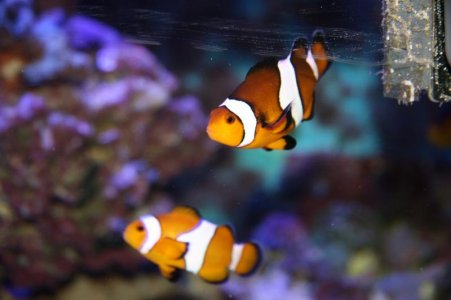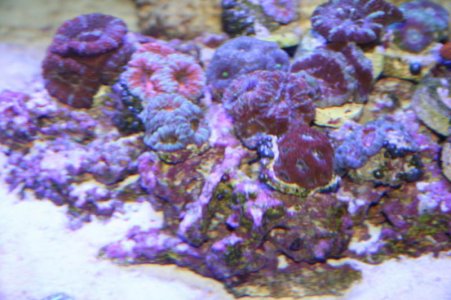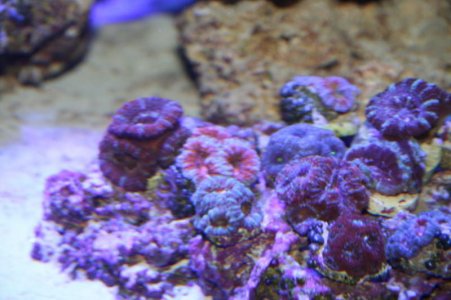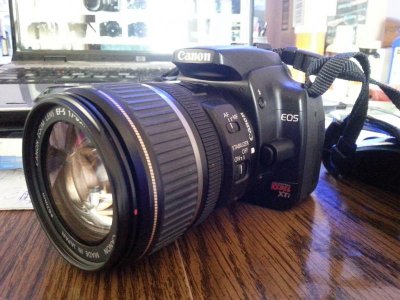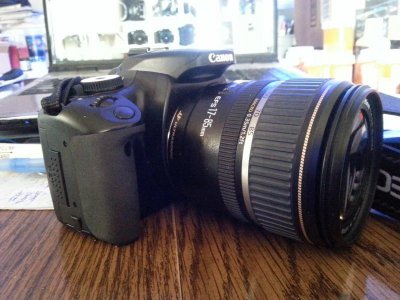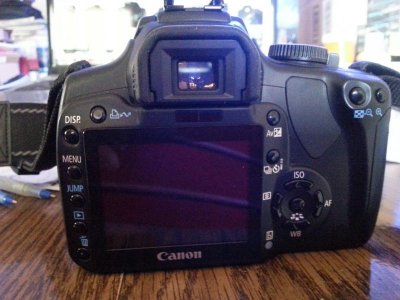Yay camera! And Canon too, not that "other brand".

Just so you know, if you're looking at jpgs, the white balancing was done in camera. Newer cameras can often handle lights up to 10,000K but beyond that shooting in RAW and setting the white balance during post is the way to go, IMHO.
RAW mode also allows wonderful non destructive editing of images. Once you get the hang of it, you will want to shoot everything RAW.
Your current setup is capable of better image quality. Make sure you're shooting straight through the glass. Some of your tank shots have a bit of a looking down perspective.
If these are shot with auto exposure, try switching over to Tv mode (not television - shutter priority, as opposed to Av, aperture priority). In Tv mode you set the shutterspeed to use and the camera will determine the aperture and ISO to use for relatively decent exposure. My guess is that in auto exposure your camera is choosing too slow of a shutterspeed for you to hand hold and get a sharp shot. Reef tank lighting tends to be less intense than full sun outdoor lighting as far as the camera's ability to expose is concerned.
Once you have your tripod, you can explore much longer shutterspeeds on stationary subjects, which allows for either lower ISO (less noise) or smaller aperture (greater depth of field). Switch from Tv to Av so you set the aperture (depth of field), and the camera determines the shutterspeed and ISO. With a tripod, remote shutter release, stable subject and no water motion, I've taken sharp shots using shutterspeeds of several seconds, versus fractions of a second.
When you get comfortable with Av and Tv, then try full manual. It makes you think about what you're trying to achieve with the shot and gives you total control over the holy trinity of exposure (aperture, shutterspeed and ISO). Understanding how varying each element of the trinity affects the shot, and how to compensate for one with others, is where much of the creative control lies.


